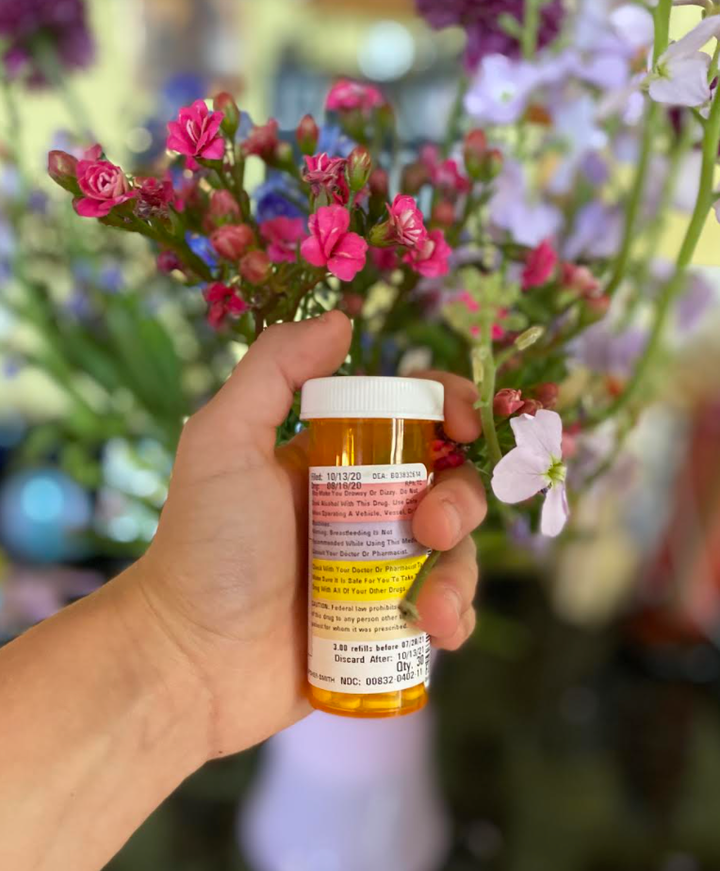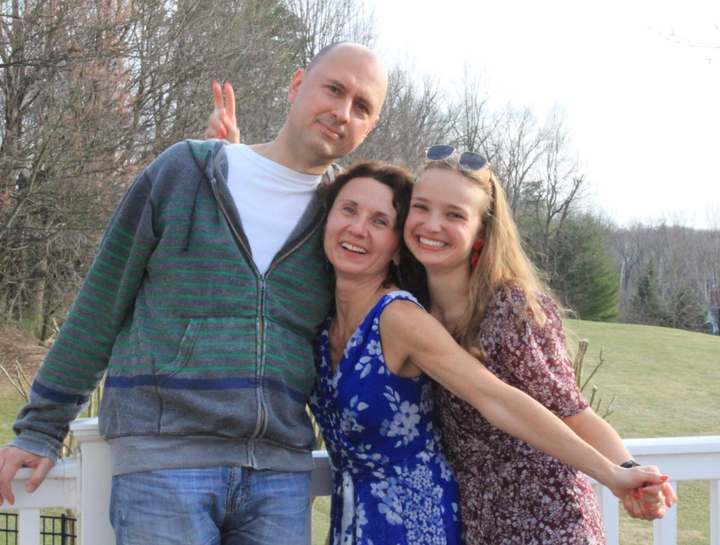In May I found myself curled up on the kitchen floor ― numb and crying. My mom stood beside me begging for me to stop. Eventually, when she realized I wouldn’t respond, she got down on the floor and molded her body to mine and just held me. We stayed like this for a while ― a very sad version of spooning. At some point, I was too worn-out to cry any longer and my hip started hurting from the linoleum, so I got up and went to bed. It was just 2:00 p.m.
This episode was not the one that finally prompted my parents to decide that their teenage daughter needed outside intervention for depression. Many more followed and included combinations of intense crying spells, panic attacks and catatonia, all of which left me depleted. Finally, after what seemed like months of struggling, my mom and I decided to schedule a telehealth appointment with our family doctor. It was a brief session of no more than 15 minutes, after which I was prescribed a 10-mg daily dose of Prozac.
Prozac is an antidepressant that became popular in the 1990s and is currently one of the only drugs of its kind to be approved by the Food and Drug Administration for child and teen use. Similar to what Elizabeth Wurtzel recalled in her memoir “Prozac Nation,” I found the effects of the medication to be astonishing ― and not in a hyperbolic way. But what was even more surprising to me was just how long it took to get to a point where my parents and I realized that I needed help ― not just teletherapy, which I had been receiving for a while by then, but what felt like an invasive chemical treatment.
My family’s views on mental health ― like many of our other views ― were generally conservative. We looked at it from a detached perspective and thought issues related to it wer something that happened to other people, but surely not us. So, my parents and I largely avoided the topic in daily discussions and became visibly uncomfortable with stories of friends’ or acquaintances’ mental health issues.


Despite coming of age in a culture that has learned to celebrate mental health and destigmatize mental disorders, I absorbed my family’s outlook without question. This caused me to dismiss my own bouts of sadness or anxious behavior as temporary and capable of being eliminated simply by willpower. Any time I felt sad, I would blame myself for being ungrateful, for not finding joy and contentment in what was right in front of me ― as if sadness and gratefulness were mutually exclusive. As if sadness was always a choice.
My breakdown in the middle of the pandemic was a wake-up call. It unearthed a suspicion I’ve always harbored despite my family’s views: that mental illness can happen to anyone, and when it does, it is a ruthless, savage beast. My parents also became more open-minded about mental health issues (from who can be affected to options for addressing them) after witnessing their daughter struggle so much ― and become so much better thanks to a medicinal treatment.
Since I started taking an antidepressant, we’ve talked more candidly about our emotions: the daily fears, worries, excitement or melancholy that would arise in each of us, often without warning. During the summer, my parents and I even decided to start spending time together sitting around our fire pit and sharing these reflections. Through our conversations, we became more empathetic toward each other and more understanding of all of our friends and acquaintances who have gone through or are going through similar experiences. It felt like a release.
All in all, Prozac changed my life by helping me stabilize my moods and maintain a positive outlook. My family’s new transparency and willingness to discuss mental health has also been a driving force behind my recovery. But my story is just one out of many, and there is certainly no one-size-fits-all treatment for mental illness.
Antidepressants are not for everyone, and sometimes it takes a while for a person to find one that works. Some people might even bypass them altogether, discovering that therapy is just as (if not more) effective. Others find that their depression is best remedied through a combination of treatments. For me, therapy provided only incremental improvements and didn’t do much to prevent my most acute mental issues, which is why my family and I decided on medication.

While the effects of various treatment plans for mental health issues are highly individual, it is safe to say that mental illness itself is becoming alarmingly more common ― especially among young people.
According to a study from the University of Michigan, about 1 in 7 children and teens in the U.S. suffered from at least one treatable mental illness in 2016. Roughly half of these kids and teens, however, did not receive the treatment or counseling that their condition demanded. More recent statistics are no more comforting: A 2020 annual survey by the American Psychological Association revealed that Gen Zers are the most stressed-out age group, pointing to a teen mental health crisis that has the potential to only get worse.
It’s possible to interpret these findings ― especially the number of young people whose mental illnesses persist untreated ― as being related to challenges like steep health care prices or limited diagnostic tools to detect mental disorders. But what if another culprit is simply the avoidance of the topic of mental illness in family homes across the U.S.? Many parents, much like mine just a year ago, might be uncomfortable starting conversations with their kids about mental health, and that can make it more likely for problems to go unnoticed for too long.
When it comes to discussions about mental health, especially at a time like this, when young adults are increasingly finding themselves confined to their homes (and the beliefs of those they live with), families need to make the conscious choice of honesty, transparency and vulnerability.
I’m so glad my own family was able to make this choice. Because of it, I am now ― and we all are ― happier and healthier than ever.
Stacia Datskovska is a 17-year-old college student who lives in Northern Virginia. Her biggest passions are writing and cooking, and she hopes to have a career at the intersection of the two as a food journalist. When she’s not studying or working as a tutor, you can find her outdoors, exercising or taking spontaneous trips to D.C. with her mom. Stacia’s work has also been published in USA Today, The Baltimore Sun, POPSUGAR, Thrive Global and more.
Do you have a compelling personal story you’d like to see published on HuffPost? Find out what we’re looking for here and send us a pitch!
Calling all HuffPost superfans!
Sign up for membership to become a founding member and help shape HuffPost’s next chapter
Credit: Source link